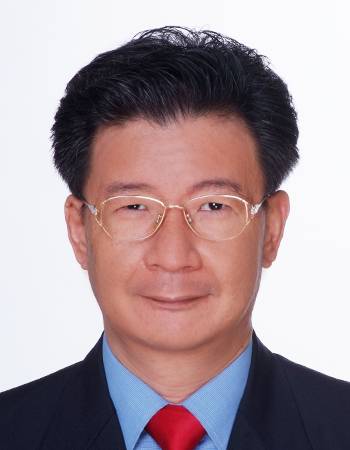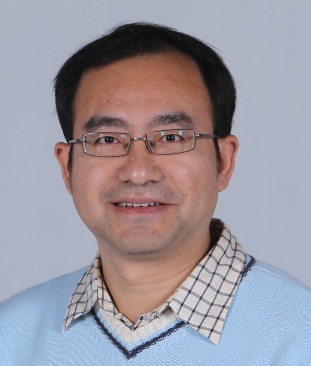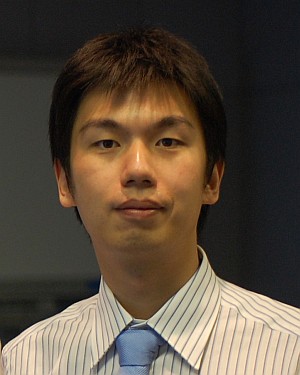|
|
Professor Shu-Ching Chen Florida International University, USA |
|
Title: |
Multimedia Big Data Management, Retrieval, and Applications |
|
Abstract: |
The pervasiveness of mobile devices and consumer electronics, and the expansion of social networks have generated huge amounts of all types of multimedia information (text, images, videos, etc.) shared among a large number of people. This intensifies the interest of the research community in developing methods to support multimedia big data management and retrieval. Providing solutions to multimedia data such as images and videos brings about a higher level of difficulty at attempting to understand their semantic meaning. In this talk, I will introduce the major components in developing a coherent framework for multimedia big data management and retrieval systems, ranging from multimedia data processing to indexing, query, retrieval, and presentation. Specifically, a set of core techniques, such as multimedia big data analysis, content-based image/video retrieval, and multimedia data mining, will be discussed in details and demonstrated using a prototype system. In addition, I will present the idea of applying these techniques to practical applications such as TV shopping and disaster information management. |
|
Bio: |
Dr. Shu-Ching Chen is a Full Professor in the School of Computing and Information Sciences (SCIS), Florida International University (FIU), Miami since August 2009. Prior to that, he was an Assistant/Associate Professor in SCIS at FIU from 1999. He received Master's degrees in Computer Science, Electrical Engineering, and Civil Engineering in 1992, 1995, and 1996, respectively, and the Ph.D. degree in Electrical and Computer Engineering in 1998, all from Purdue University, West Lafayette, IN, USA. He is the Director of Distributed Multimedia Information Systems Laboratory at SCIS. His main research interests include content-based image/video retrieval, distributed multimedia database management systems, multimedia data mining, and disaster information management. Dr. Chen has authored and coauthored more than 270 research papers and four books. Dr. Chen was named a 2011 recipient of the ACM Distinguished Scientist Award. He received the best paper award from 2006 IEEE International Symposium on Multimedia. He was awarded the IEEE Systems, Man, and Cybernetics (SMC) Society’s Outstanding Contribution Award in 2005 and was the co-recipient of the IEEE Most Active SMC Technical Committee Award in 2006. He was also awarded the Inaugural Excellence in Graduate Mentorship Award from FIU in 2006, the University Outstanding Faculty Research Award from FIU in 2004, the Excellence in Mentorship Award from SCIS in 2010, the Outstanding Faculty Service Award from SCIS in 2004, and the Outstanding Faculty Research Award from SCIS in 2002. He has been a General Chair and Program Chair for more than 35 conferences, symposiums, and workshops. He is the founding Editor-in-Chief of International Journal of Multimedia Data Engineering and Management and Associate Editors/Editorial Board for other 17 journals. He is the Chair of IEEE Computer Society Technical Committee on Multimedia Computing and Co-Chair of IEEE Systems, Man, and Cybernetics Society’s Technical Committee on Knowledge Acquisition in Intelligent Systems. He was a steering committee member of IEEE Transactions on Multimedia (2011-2013). He also serves/served as a member of technical program committee for more than 300 professional meetings. He is a fellow of SIRI. |
|
|
Professor Daniel Cohen-Or Tel Aviv University, Israel |
|
Title: |
Inspiring Modeling |
|
Abstract: |
An interesting question is whether a machine can assist humans in being creative and inspire a user during the creation of 3D models or a shape in general. One possible means to achieve this is through a design gallery which presents a variety of computed suggestive designs from which the user can pick the ones he likes the best. The ensuing challenge is how to come up with intriguing suggestions which inspire creativity, rather than banal suggestions which stall the design process. In my talk I will discuss about the notion of creative modeling, synthesis of inspiring examples, the analysis of a set, and show a number of recent works that step towards this end. |
|
Bio: |
Daniel Cohen-Or is a professor at the School of Computer Science. He received his B.Sc. cum laude in both mathematics and computer science (1985), an M.Sc. cum laude in computer science (1986) from Ben-Gurion University, and his Ph.D. degree from the Department of Computer Science (1991) at State University of New York at Stony Brook. He received the 2005 Eurographics Outstanding Technical Contributions Award. His research interests are in computer graphics, in particular, modeling and synthesis. His main interest right now is in: shape analysis and synthesis, shape modeling and surface reconstruction. |
|
|
Professor Xudong Jiang Nanyang Technological University (NTU), Singapore |
|
Title: |
Identify Discriminative or Misleading Information in Data-driven Feature Extraction and Dimensionality Reduction |
|
Abstract: |
Finding/extracting low-dimensional structures in high-dimensional data is of increasing importance, where images/signals lie in observational spaces of thousands, millions or billions of dimensions. The curse of dimensionality is in full play here: We have to conduct inference with a limited or no human knowledge. Machine learning is a solution that becomes hotter and hotter to boiling. This is evidenced by numerous techniques published in the past two decades, many of which are in prestige journals. Nevertheless, there are some fundamental concepts and issues still unclear or in paradox. For example, we often need many processing steps in a complex information discovery/recognition system. As the information amount cannot be increased and must be reduced by any processing, why do we need it before the main processing? This seemly simple question easily answerable if each step uses different prior knowledge is nontrivial in machine learning. People proposed numerous machine learning approaches but seem either unaware of or avoiding this fundamental issue. Although extracting the most discriminative information is indisputably the ultimate objective for pattern recognition, this talk will challenge it as a proper or effective criterion for the machine learning-based dimension reduction or information/feature extraction, despite the fact that it has been employed by almost all researchers. Do think it in-depth and express your opinions during the talk. |
|
Bio: |
Xudong Jiang received the B.Sc. and M.Sc. degree from the University of Electronic Science and Technology of China, in 1983 and 1986, respectively, and received the Ph.D. degree from Helmut Schmidt University Hamburg, Germany in 1997, all in electrical and electronic engineering. From 1998 to 2004, He worked with the Institute for Infocomm Research, A*Star, Singapore, as Senior Research Fellow, Lead Scientist and appointed as the Head of Biometrics Lab where he developed a fingerprint verification algorithm that achieved the fastest and the second most accurate fingerprint verification in the International Fingerprint Verification Competition (FVC2000). He joined Nanyang Technological University, Singapore as a faculty member in 2004 and served as the Director of the Centre for Information Security from 2005 to 2011. Currently, Dr Jiang is a tenured Associate Professor in Nanyang Technological University. He has published more than hundred research papers in international refereed journals and conferences, where 19 papers were published in IEEE Journals: TPAMI(5), TIP(5), TSP(3), SPL(2), SPM, TIFS, TCS and TCSVT. He is also an inventor of 8 patents (3 US patents), some of which were commercialized. Dr Jiang is a senior member of IEEE and has been serving as Associate Editor for IEEE Signal Processing Letters and IET Biometrics and Guest Editor of SI on Biometrics for Journal of Network and Computer Applications, Elsevier Science. He has served as Program Committee Chair and Keynote Speaker of multiple international conferences. His research interest includes pattern recognition, computer vision, machine learning, biometrics, Surveillance and signal/image processing. |
|
|
Professor Nadia Magnenat-Thalmann MIRALab, University of Geneva, Switzerland Nanyang Technological University (NTU), Singapore |
|
Title: |
Social Robots and Virtual Humans as Assistive Tools for Improving Our Quality of Life |
|
Abstract: |
Growing numbers of aging people result in great demand for social robots and virtual humans to support health care and independent life for a long time at home. We provide an overview of various actual potential applications at home in the literature concerning social robots and virtual humans. In addition, we report our latest research progress in our institute, i.e., social communication, falling-down detection, affect computing, attention capture. All the research and applications demonstrate that the social robots and virtual humans can provide a better daily life in home environment. |
|
Bio: |
Professor Nadia Magnenat-Thalmann has pioneered research into virtual humans over the last 30 years. She obtained several Bachelor's and Master's degrees in various disciplines (Psychology, Biology and Biochemistry) and a PhD in Quantum Physics from the University of Geneva in 1977. From 1977 to 1989, she was a Professor at the University of Montreal in Canada and then Professor at the University of Geneva. She is Editor-in-Chief of The Visual Computer Journal published by Springer Verlag, Co- Editor-in-Chief of the journal Computer Animation and Virtual Worlds published by Wiley and Associate Editor of many other scientific journals. |
|
|
Professor Huamin Qu Hong Kong University of Science and Technology |
|
Title: |
VisMOOC: Visual Analytics Platform for Massive Online Open Courses (MOOCs) |
|
Abstract: |
Massive Open Online Courses (MOOCs) are becoming increasingly popular and have attracted much attention of both students and instructors. Recent research shows that e-learners spend the majority of their time watching lecture videos. With thousands of students watching course videos, millions of clickstream can be produced and recorded for a single course. Such large-scale clickstream data of MOOC videos pose a special analytical challenge but provides a good opportunity for understanding how students interact with the videos, which can help instructors and education analysts gain insight into online learning behaviors. In this talk, I will present VisMOOC, an interactive online visualization system for analyzing the clickstream data and also the forum data from MOOCs. Some new findings on learning behaviors of students taking MOOCs will also be shared. |
|
Bio: |
Huamin Qu is an associate professor in the Department of Computer Science and Engineering at the Hong Kong University of Science and Technology. His main research interests are in visualization and computer graphics. He has co-authored more than 70 refereed papers including 23 papers in the IEEE Transactions on Visualization and Computer Graphics (TVCG). He is on the steering committee of the IEEE Pacific Visualization Conferences and is an associate editor of IEEE TVCG. He has received 4 best paper/honorable mention awards and is a winner of 2009 IBM Faculty Award. He obtained a BS in Mathematics from Xi'an Jiaotong University, China, an MS and a PhD (2004) in Computer Science from the Stony Brook University. |
|
|
Researcher Li Xu Image & Visual Computing Lab Lenovo R&T (Hong Kong) |
|
Title: |
On Decolorization and Perception-Based Quality Metrics |
|
Abstract: |
We are talking about a process to transform a color image into a grayscale one, which is a fundamental tool in digital printing, stylized black-and-white photography, and in many single channel image and video processing applications. While recent research focuses on retaining as much as possible meaningful visual features and color contrast, less attention has been paid to the speed issue of the conversion. Consequently, the resulting decolorization methods are typically orders of magnitude slower than standard procedures such as matlab built-inrgb2gray function, which largely hinders their practical use. In this talk, we present a very fast yet effective decolorization approach aiming at maximally preserving the original color contrast. The effectiveness of the method has been borne out by a new quantitative metric as well as qualitative comparisons with state-of-the-art methods. |
|
Bio: |
Li XU is a researcher from the Image & Visual Computing (IVC) Lab of Lenovo R&T (Hong Kong), where he currently leads a group focusing on imaging & sensing innovation. He received the BS (2004) and MS (2007) in computer science and engineering from Shanghai JiaoTong University, and the PhD in computer science and engineering (2010) from the Chinese University of Hong Kong. Li received the Microsoft Research Asia Fellowship Award in 2008 and the best paper award of NPAR 2012. His major research areas include motion estimation, image deblurring, image/video analysis and enhancement. |





